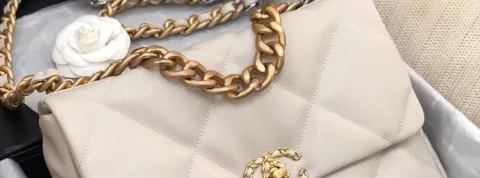
Chanel, Louis Vuitton, Bulgari: Why is luxury increasing its prices?
If the luxury industry regularly revises its prices to reflect the various fluctuations of the market, it is clear that in less than a year, some emblematic pieces have seen very significant increases, ranging from 5 to 17%. So, is this a response to the health crisis, a rise in raw materials, fluctuations or strategic marketing positioning? Zoom in on a trend that could soon become widespread.
Health crisis, pricing power and fluctuations
Chanel, Louis Vuitton but also Tiffany & Co. and Bulgari, all big names in fashion and jewelry that have recently chosen to increase their prices. According to Reuters, the model 2.55 in quilted leather signed Chanel is now 7800 euros against 6050 euros in December 2020. An increase of 30% justified by the increase in the price of raw materials but also due to strong fluctuations in exchange rates. Price adjustments have also been made to ensure that there is not too great a difference in price between the various markets where the brand is available.
A global harmonization but also a well-known strategy in the luxury industry. The practice of "pricing power" consists of a company increasing its prices in times of economic crisis. In concrete terms, it is a question of increasing the margin to compensate for the drop in sales volumes. This is a delicate technique that requires an established prestige and is rather reserved for products and recognized brands in order to be able to justify an increase without impacting its customers or sales. A desirability that does not seem to weaken because, contrary to classic products, in luxury it works: the more the price increases, the more the demand increases. Birkin, Lady Dior or Chanel quilted... from love at first sight to financial investment, there is only one step.
To preserve its durability and rarity
Another objective is to avoid trivialization. Because, behind these financial adaptations, there is also a reaction of the industry to a certain democratization. Some specialists even speak of a luxury mass market. An unthinkable association for a sector that is defined by rarity and exception. The risk? Models that lose their value and customers who no longer find themselves in this globalization.
Through this price increase, brands also want to ensure their desirability in the long term and thus preserve their exclusive DNA.
If Hermès holds the first place of the podium in terms of quotation on the luxury bag market, other houses are approaching it and see in this increase of their prices a certain claim of a recognized know-how and an iconic excellence.
But it is also the idea of the precious and the timeless: notions that are very much in vogue and that seem to resonate with customers. Indeed, far from the it bag interchangeable with the collections, as Thibaut de La Rivière, director of Sup de Luxe, points out: "The luxury bag must remain a special and precious piece, which is passed on from generation to generation. Today, it is a question of a different kind of consumption and a need for durability on the part of customers", and for the luxury industry it is a way to establish its prestige and ensure its durability.
